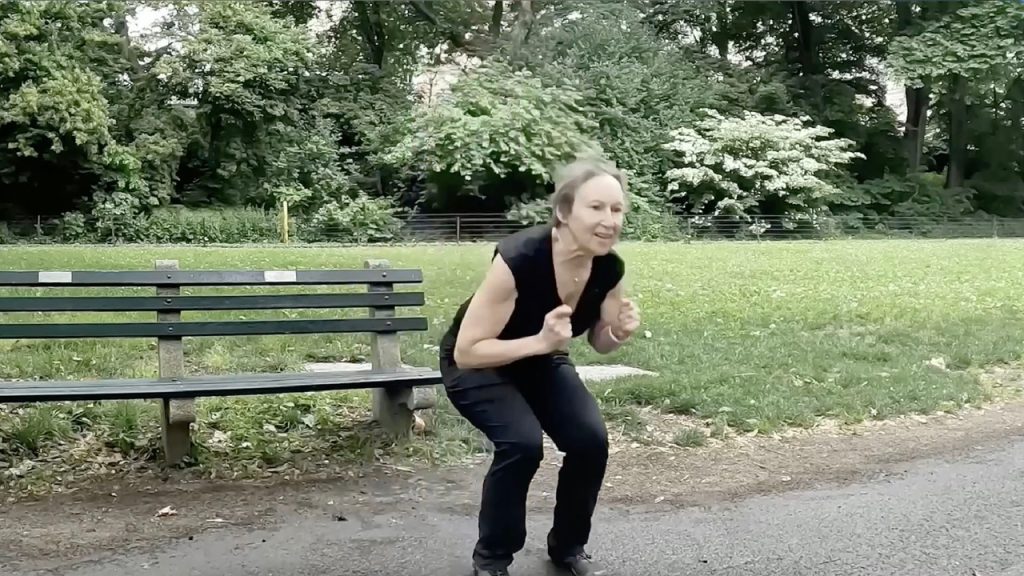
We probably know that sitting can be bad for our health. In fact, sitting has been called the “new smoking.” So, if you’re laid out on a couch, or plopped in a chair right now, you might have the most common health problem in America today — Sitting Disease. That might sound silly, but prolonged sedentary living plays a substantial role in a lot of the health concerns of our time.
The U.S. is a world leader in sloth. Seventy-five percent of the population of the United States fails to meet even the minimum government recommendation for daily exercise. And latest statistics shows that the highest rates of inactivity remain among those ages 65 and over. This epidemic is not confined to any region of the United States either. It is ubiquitous in both rural and urban communities and both the wealthy and the poor. (1) (2)
Chronic diseases are major killers in the modern era, and physical inactivity is a primary cause of most of them. Depressing, huh! Well, it doesn’t have to be a death sentence. Increasing our physical activity can result in substantial increases in both the number and quality years of life. Adults who are physically active are healthier and less likely to develop many chronic diseases than adults who aren’t active — regardless of their gender or ethnicity.
Physical activity/exercise is also the primary way we can slow down biological aging, as well as prevent or delay premature death from 35 chronic conditions, including: low cardiorespiratory fitness, obesity, type 2 diabetes, coronary heart disease, hypertension, stroke, depression and anxiety, osteoporosis, osteoarthritis, balance, bone fracture/falls, many cancers, erectile dysfunction, and pain. (3)
Get Up and Move
It’s time to take a stand! Get on your feet and out of the computer-typing, cell phone using, freeway-driving position you find yourself in all too often.
Of course, it can be tough to schedule time to exercise when you want to see the hottest thing on Netflix, there’s Haagen-Dazs in the freezer; actually, if you’ve got anything better to do with your time. For a lot of us, the most pressing question about exercise is: How little can I get away with?
It turns out, doing anything is better than doing nothing. This means you can get the same health benefits as people who work out in a gym but spend the rest of their time sitting. Staying active throughout the day results in similar benefits to doing a rigorous workout.
We can reverse three to four decades of inactivity by performing easy, bodyweight, multi-joint movements that use more muscles. Even doing twice-a-week leg exercises strengthens them. And small gains in leg strength make a big difference in everyday life. It can get easier to get out of that chair, climb stairs, and carry groceries. Incorporating exercises for leg strengthening into your regular workouts may also aid in fat loss. And you’ll improve your balance. (4)
So, What’s the Drill?
Most government guidelines define physical inactivity as anything less than 150 minutes of walking or moderate physical activity per week. Physical activity is anything that gets your body moving — not just traditional exercise. The process of adding activity to your busy life can be difficult, but it can be done. Even lifelong exercisers had to start somewhere.
150 minutes each week may sound like a lot of time, but the good news is you don’t have to do it all at once. You can meet this goal by breaking it into smaller chunks of time during the day to. Take a 10-minute brisk walk and repeat it three times a day, five days a week. By adding structured, planned, intentional movement to your days, you can reap additional life benefits, increasing the health of your heart and lungs, improving muscular and bone strength, and increasing flexibility. (5)
Look for ways to be active that are fun and work for you. My vision is to guide you to live, work, and play actively, no matter your age, where you live, or your ability.
Jacqueline Gikow, whose holistic, health and wellness practice centers on pain relief through better movement, is the owner of Audacious Living NYC™. She is certified through the National Association of Sports Medicine (NASM), the National Board of Medical Examiners (NBCHWC), the Functional Aging Institute (FAI), Medfit (MFN), and the Arthritis Foundation (AFAP/AFEP). Her fitness practice includes in-home and remote, one-on-one fitness training and coaching in New York City. Visit Jacqueline’s website at audaciouslivingnyc.com, or on Facebook.
References
